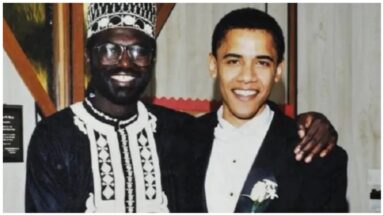On Wednesday, director Nia DaCosta tweeted out a stunning new trailer for her upcoming Candyman film, along with a brief explanation of the themes she’s exploring in the movie. If it weren’t the trailer for a new Jordan Peele production, it’d be an extraordinary short film about the atrocities this country has inflicted on black people:
The beauty of the style and the horror of the content comes across effortlessly on first viewing, but if you never got around to watching Candyman, and also never got around to learning any history, there’s some context you might be missing. So before diving into the trailer in detail, it helps to know a little more about the original Candyman.
The film comes from “The Forbidden,” a Clive Barker short story from 1985, which is not about race. In the story, Helen, a graduate student who is exploring a decrepit British council estate while working on a thesis about graffiti, starts hearing stories from the residents about a series of gruesome murders. Helen tries to determine whether or not they really happened or are urban legends, but the answer turns out to be both: Once Helen decides that the murders didn’t happen, the killer from the urban legend manifests, complete with a hook for a hand, offering Helen the chance to become his victim—and an urban legend herself:
Trump rally in Tulsa spurs renewed call for 1921 racial massacre reparations
Helen and the people she is studying for her thesis are in different worlds, class-wise, but they’re all white. When Barker and Bernard Rose adapted the story as a screenplay for Rose to direct, however, they set it in the United States to attract American financing, and you can’t make a film about American public housing without dealing with race. Barker and Rose transposed the plot to Cabrini-Green, the enormous Chicago housing project that became nationally infamous for governmental neglect and violent crime. Picking up on the story’s theme of urban legends, they worked in another one, making Candyman a Bloody Mary-type, conjured in mirrors. They also gave him a backstory: He was a wealthy and well-educated black artist hired to paint a portrait of the beautiful daughter of a wealthy white man a few decades after the civil war. Artist and subject fell in love, there was a pregnancy, and then the inevitable lynching, in this case involving bees. The movie, with its gorgeous Philip Glass score and a chilling performance from Tony Todd as the Candyman, is a minor classic of the early 1990s:
Source: The Real-Life Racist Killings Depicted in That Haunting Candyman Trailer



Recent Comments